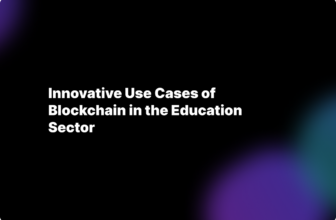
Flow and continuity distinguish successful essays, not disjointed streams of consciousness. Strategic organization with smooth transitions that logically build one idea to the next demonstrates exemplary writing. Yet deftly weaving new strands of discussion into an essay often proves challenging even for experienced writers. In such cases, savvy students may want to engage an essay writing service UK for assistance organizing their thoughts. Savvy writers utilize cogent organizational structures, insightful contextual framing, transitional phrases, and synthesis of concepts to masterfully introduce new topics and lead readers seamlessly into uncharted territory. Follow these techniques to elevate your essay’s organization and coherence.
Table of Contents
Use Section Headers as Guideposts

Source: upscalelivingmag.com
For lengthy or complex essays, use informative headers labeling each new portion like “Origins of the Movement” or “Key Opposing Viewpoints”. This orientates the reader immediately to the shifting focus. Header formatting also visually cues the new topic. It’s wise to briefly summarize the essence of the previous section to provide context, before using the header to definitively announce the new direction. Think of headers as navigational guideposts that enable readers to fluidly follow you onto each successive theme.
Bridge Topics with Transitional Phrases
Overt transition words ease movement between topics, preparing the reader for an idea shift. For example, beginning paragraphs with phrases like “Turning now to…” or “Building upon the previous point…” explicitly signals the relationship with preceding content. Other useful transitional phrases include: “In addition”, “On the other hand”, “Whereas”, “In contrast”, or “Returning to our initial idea”. Punchy sentence transitions also nicely segue between topics when beginning new paragraphs.
Revisit Big Picture Relevance
After diving deep into analyzing a particular sub-point or example, a short paragraph reconnecting this detail back to the essay’s overarching focus and thesis refreshes the reader’s perspective. For instance, you might write “This community program exemplifies the broader trend of citizens nationwide taking accountability for their neighborhoods’ welfare, mirroring the central argument that…” These big picture course corrections realign with primary themes so new topics feel cohesive, not randomly tacked on.
Foreshadow Discussion of New Topics

Source: sea-amigos.com
Savvy writers subtly plant the seeds to familiarize readers with new concepts slated for later discussion. Early on they may say, “After exploring the initial events, we will then turn to the political repercussions…” This foreshadowing makes new topics feel like a natural, anticipated progression rather than jarring departures. Readers perceive continuity knowing what to expect. Weave in early mentions to pave the way for smooth integration of new strands.
Use Analogies and Anecdotes
Vivid analogies make fresh topics relatable by comparing them to everyday examples familiar to readers. For instance, you can introduce the topic of gravity by first analogizing, “Just as leaves floating downstream are drawn inexorably towards land impediments, so too planets orbiting the sun cannot resist gravity’s unseen influence.” Anecdotes framed as mini-stories also provide engaging context transitioning into new concepts.
Link Topics Causally
Pointing out the inherent cause and effect relationships that logically necessitate inclusion of the next topic provides intuitive flow. For example, transition with “Because the partisan divisions continued escalating year after year, the issue inevitably spilled onto the ballot…” explanatory phrases spelling out the causal thinking behind your organizational decisions reduces perception of non-sequiturs or logical leaps.
Place New Topics Near Related Content

Source: ubertutors.co.uk
Strategic topic placement also smooths introductions. Readers expect related themes to cluster together. Discussing the impacts of technology saturation paves the way for subsequently detailing innovations like artificial intelligence. Equally, address criticisms immediately following the stance they critique. Proximate grouping based on connections eases comprehension. For essays requiring exceptional critical thinking skills, students may benefit from the assistance of premier critical thinking writing services to organize ideas logically.
Summarize and Transition Quickly
When moving into significantly new territory unlinked to preceding sections, briefly summarize key takeaways covered up to this point, then use transitional phrasing to justify the need to cover the new topic, such as “Now that we have thoroughly discussed initiatives to address homelessness, the next priority is reforming the foster care system, which faces interrelated challenges…” This wraps up one segment while explaining need to tackle the next.
Revisit and Link Back to Introductions

Source: medium.com
Glance back at your original introduction and thesis to realign with overarching focus, which reminds readers as well. For example, “This disturbing trend of increased strain on law enforcement directly relates back to our original argument that budgets and training procedures require significant reform…” Referencing the introduction refocuses on the central purpose and how new topics remain crucial to addressing it.
Conclusion
Organizing an essay with clear transitions is an acquired skill requiring forethought about structure and connections. While introducing new strands unrelated to previous points risks disjointedness, utilizing the above techniques levels out these shifts skillfully. Headers, transitional phrases, causal links, analogies, strategic organization, foreshadowing and reorientation to the thesis purposefully guide readers through fresh subtopics that progressively build toward a united final point. Mastering thoughtful organization and seamless flow elevates an essay’s impact and coherence.







